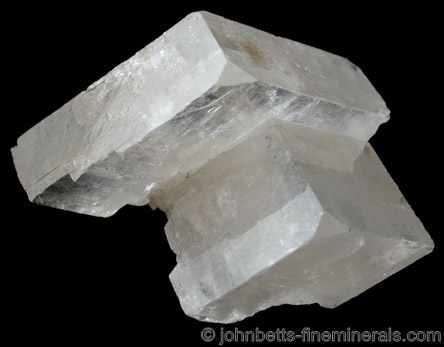The Mineral magnesite

The most common form of Magnesite is white, microcrystalline, porous masses that are dull in luster, and have the appearance of unglazed porcelain. Because they are porous, they adhere to the tongue when licked.
An interesting Magnesite occurrence is in Brumado, Brazil, where a deposit of clear, well formed, rhombohedrons similar to Iceland Spar Calcite found. Until this find, such crystals were, although identical in appearance to Iceland Spar Calcite, they are much rarer and sought after. Common Iceland Spar Calcite has been wrongly labeled by some unscrupulous dealers as Magnesite to stimulate sales.
Magnesite belongs to the calcite group of minerals, a group of related carbonates that are isomorphous with one another. They are similar in many physical properties, and may partially or fully replace one another, forming a solid solution series. All members of the calcite group crystallize in the trigonal system, have perfect rhombohedral cleavage, and exhibit strong double refraction in transparent rhombohedrons.
Color
Colorless, white, gray, yellow, brown, orange, light pink, light green
Properties
Streak
White |
Hardness
3.5 - 4.5 |
Transparency
Transparent to nearly opaque |
Specific Gravity
3.0 - 3.3 |
Luster
Vitreous to dull |
Cleavage
1,3 - rhombohedral |
Fracture
Conchoidal to even |
Tenacity
Brittle |
Other ID Marks
1) Massive, porous specimens will stick to the tongue if licked.
2) Occasionally fluorescent blue or green. |
Varieties
-
Iron rich variety of Magnesite, containing a greater amount of magnesium over iron. Its chemical formula is (Mg,Fe)CO3. If the amount of iron exceeds the magnesium, the mineral is called Sideroplesite which is a magnesium rich variety of Siderite.
Uses
Magnesite is an important ore of magnesium, and used as insulating material. White Magnesite is also used as a minor collectors gemstone, polished into beads and spheres as well as carved into figures. These forms of Magnesite often have black or brown rock veins running through the mineral.
Noteworthy Localities
Excellent Magnesite specimens came from Styria, Austria, especially at Oberdorf an der Laming. Other European occurrences are Laach lake, Eifel Mts, Germany, where it occurs as rounded balls; Monterufoli, Pomarance, Tuscany, Italy; the Azcarate Quarry, Eugui, Navarre, Spain; and Albatera, Alicante, Spain.
In Australia good Magnesite comes from Mt. Bischoff, Waratah, Tasmania; and in China good specimens were found at Shangbao, Hunan Province.
Clear crystals, identical in appearance to the Iceland Spar variety of Calcite, occur at Brumado, Bahia, Brazil, which is perhaps the most famous occurrence of this mineral.
U.S. occurrences are the Cedar Hill Quarry, Fulton, Lancaster Co., Pennsylvania; Wood's Chrome Mine, Texas, Lancaster Co., Pennsylvania; Bisbee, Cochise Co., Arizona; and Gabbs, Nye Co., Nevada; and in Serpentine at Staten Island, (Richmond Co.), New York.
Distingushing Similar Minerals
Calcite - The rare transparent Magnesite rhombohedrons appear identical to Calcite%, but can be distinguished by the slight hardness difference, and more efficiently by the fact that Calcite effervesces even in cold and diluted hydrochloric acid, whereas Magnesite only in hot, undiluted hydrochloric acid.
Dolomite - Cannot be distinguished from Magnesite by ordinary methods. However, Dolomite usually forms as curved crystals, whereas Magnesite does not.